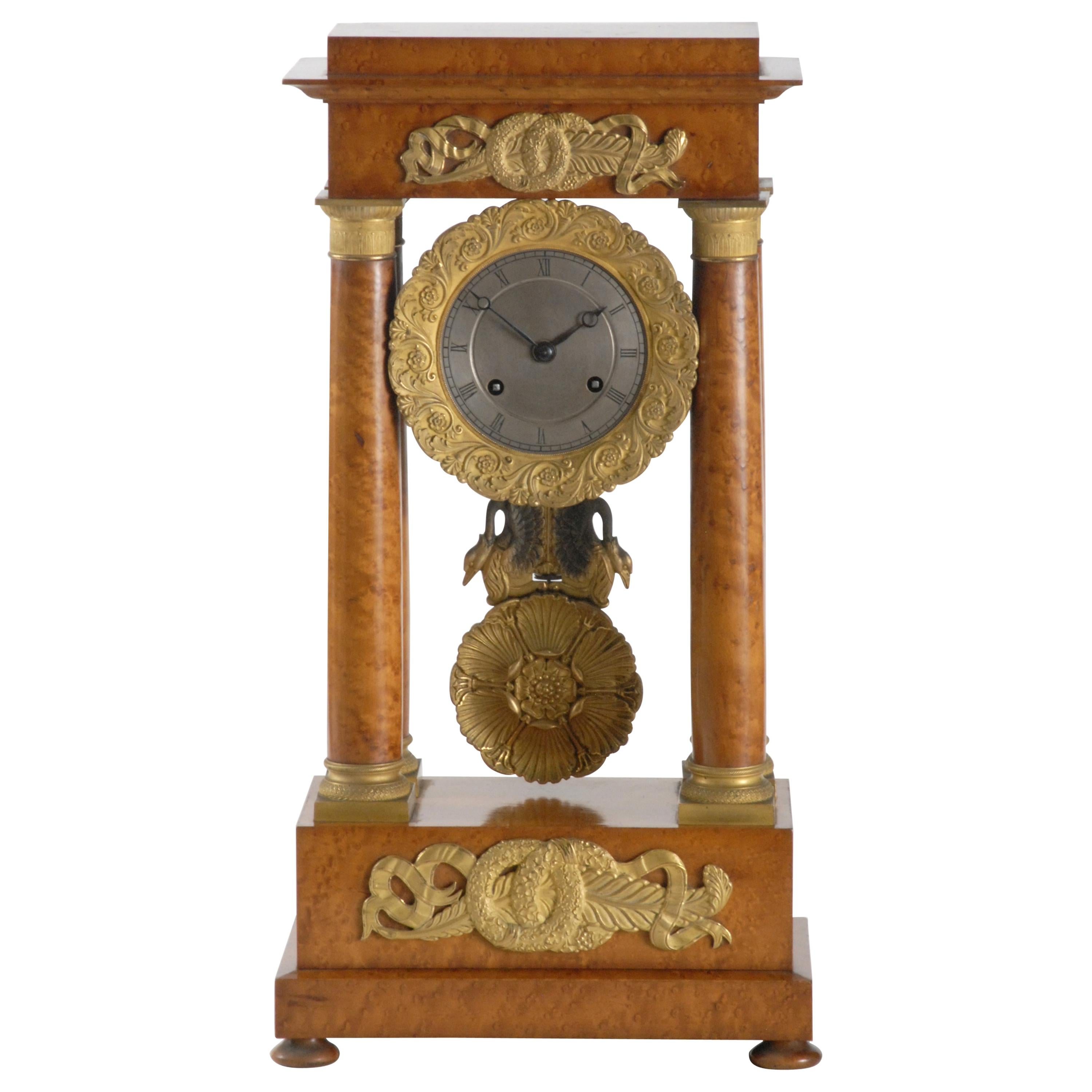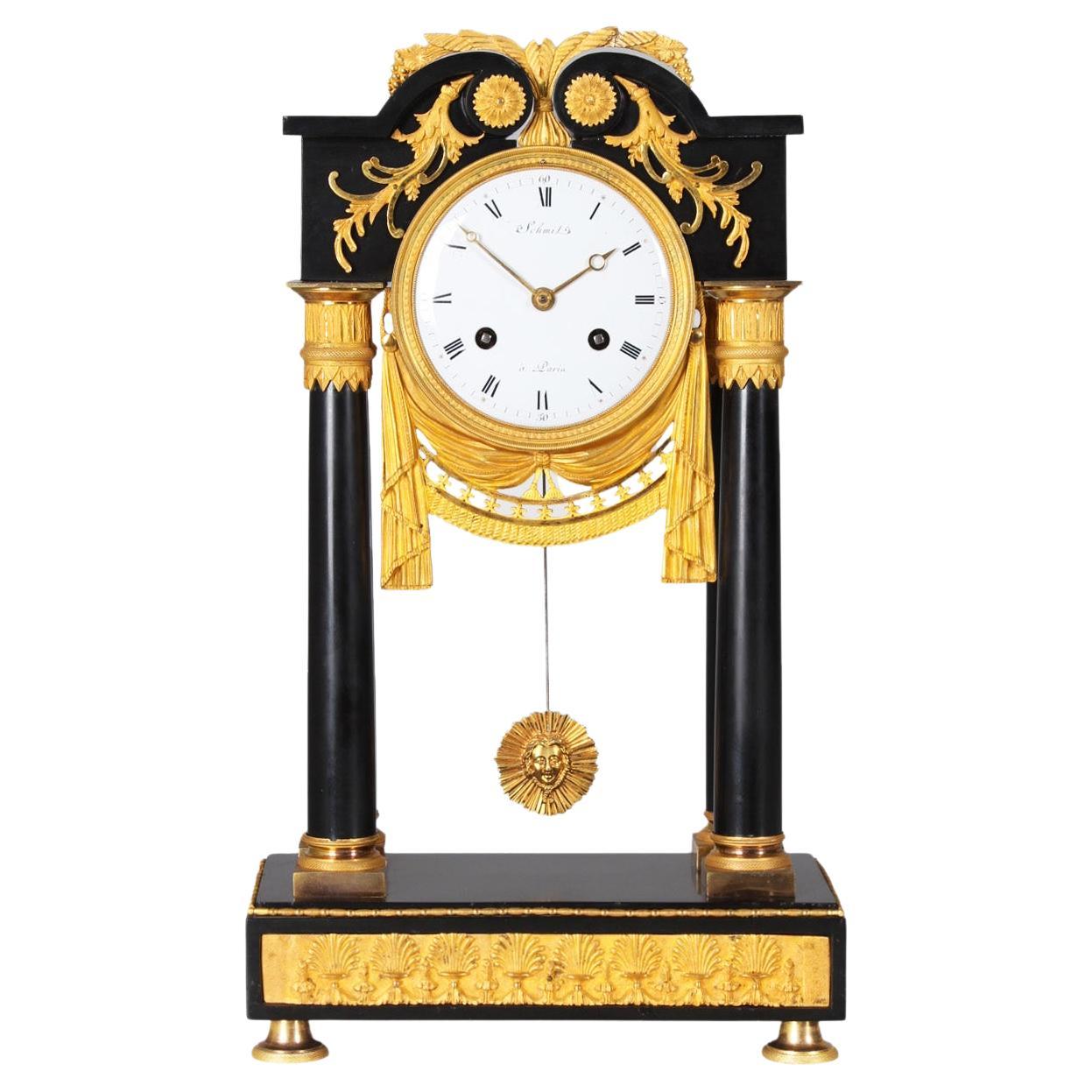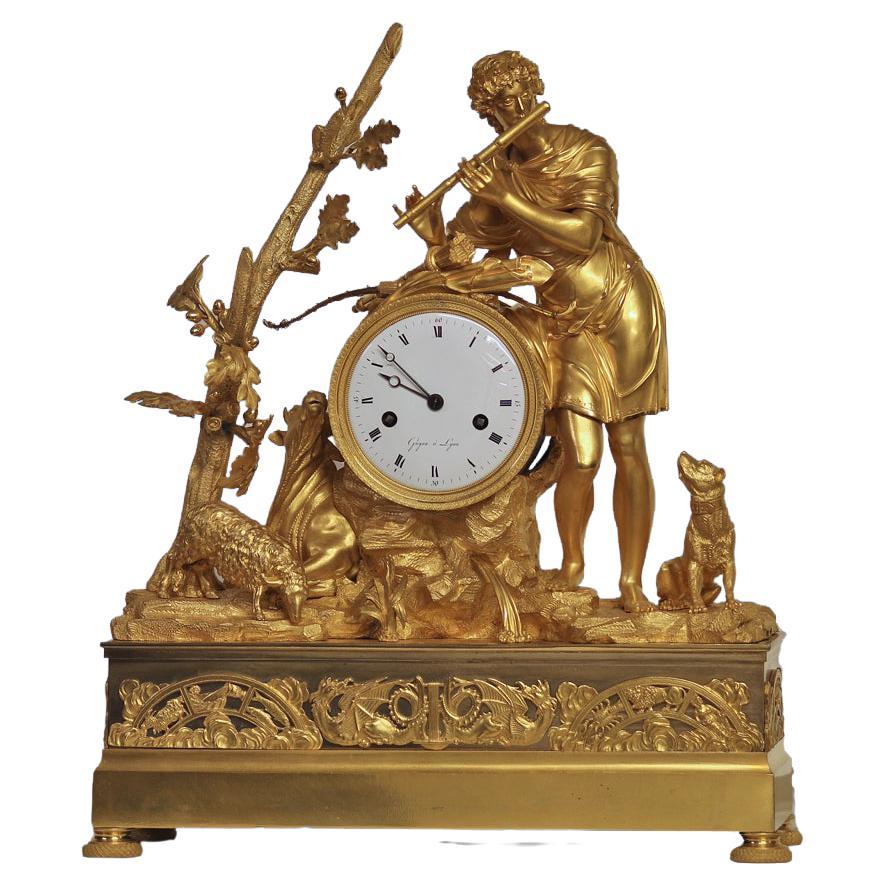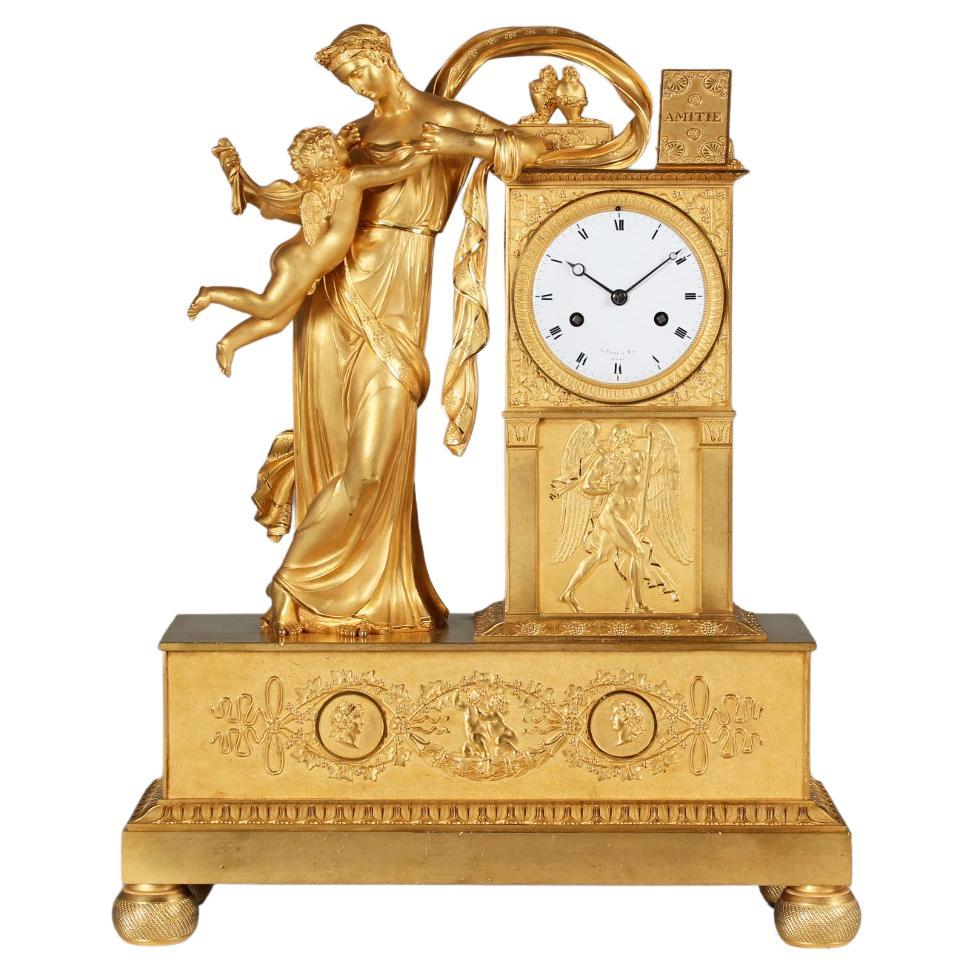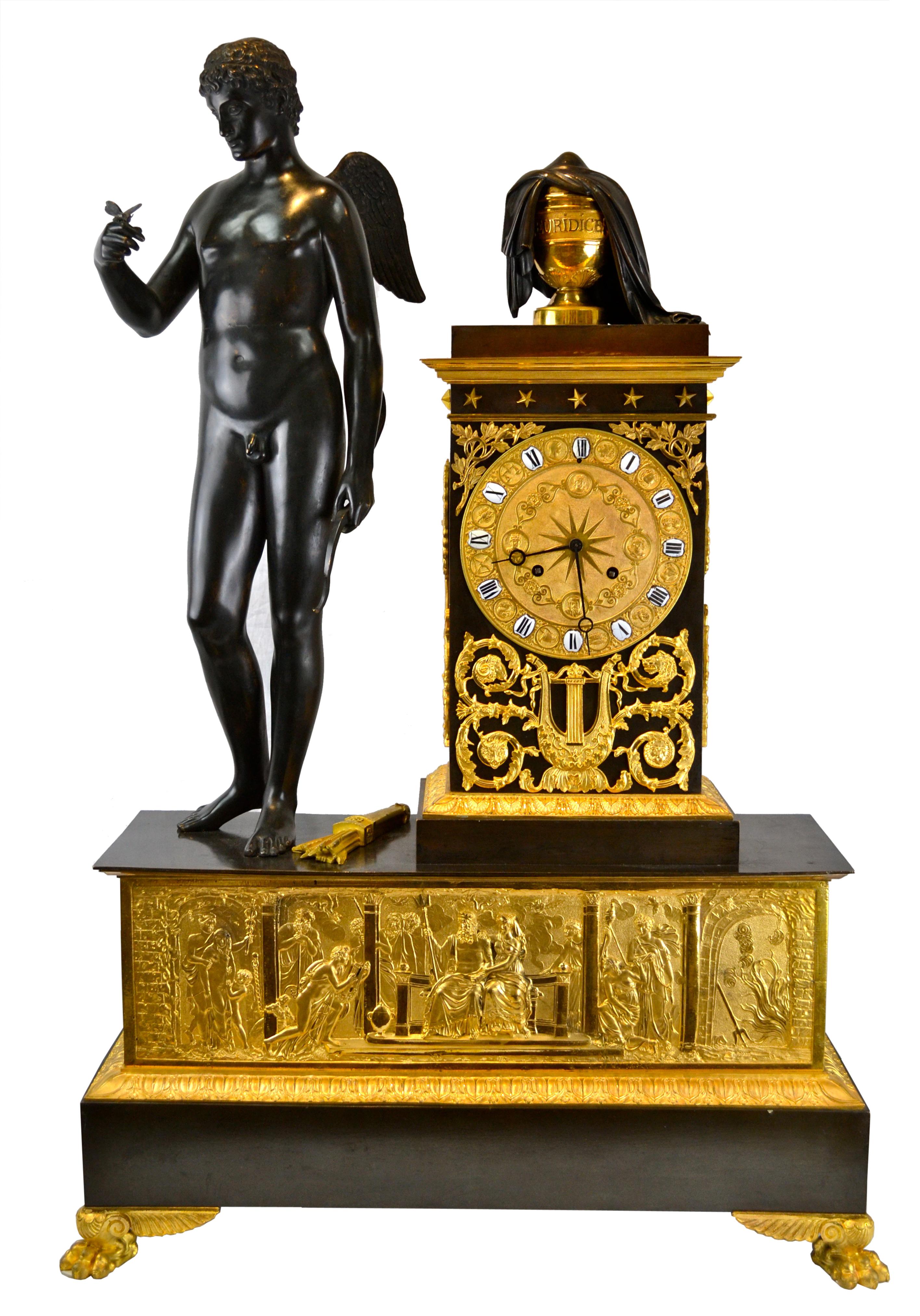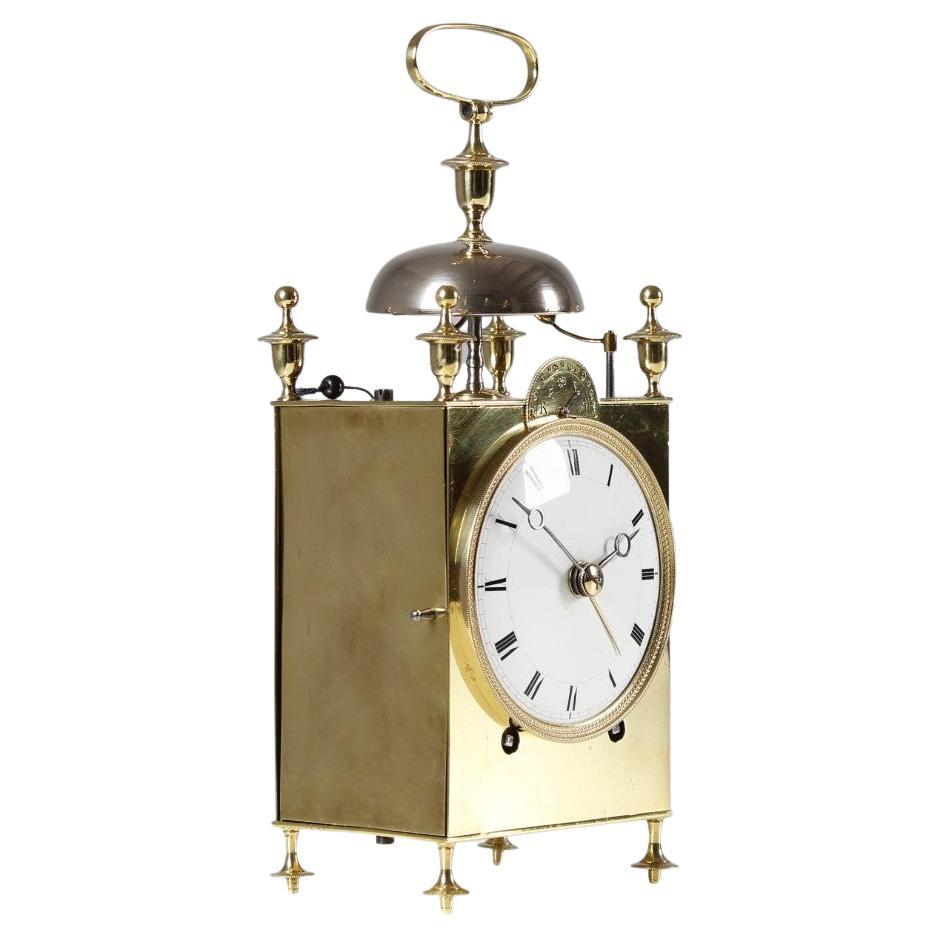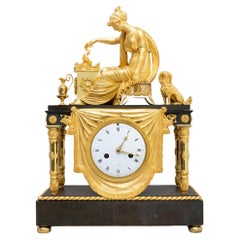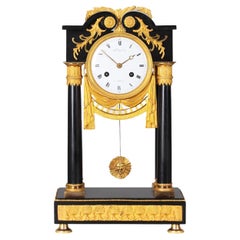
Monumental Pendule, Orpheus and Eurydice, France, circa 1815
View Similar Items
Want more images or videos?
Request additional images or videos from the seller
1 of 14
Monumental Pendule, Orpheus and Eurydice, France, circa 1815
About the Item
- Dimensions:Height: 35.24 in (89.5 cm)Width: 24.41 in (62 cm)Depth: 9.06 in (23 cm)
- Style:Empire (Of the Period)
- Materials and Techniques:
- Place of Origin:
- Period:
- Date of Manufacture:circa 1815
- Condition:
- Seller Location:Greding, DE
- Reference Number:Seller: 063-01671stDibs: LU1014221069932
About the Seller
4.9
Gold Seller
These expertly vetted sellers are highly rated and consistently exceed customer expectations.
Established in 1987
1stDibs seller since 2013
446 sales on 1stDibs
Typical response time: 8 hours
More From This SellerView All
- Charles X Pendule, France around 1830Located in Greding, DEPortal clock on rectangular stepped base in mahogany veneer with small squeeze feet and fire-gilded applications in the form of rose festoons. The stepped...Category
Antique 1830s French Charles X Mantel Clocks
MaterialsBronze
$3,294 Sale Price21% Off - Fire-Gilt Mantel Clock, France / Paris, circa 1830Located in Greding, DEFrench mantel clock made of burnished and fire-gilded bronze with an enamelled dial, there inscribed "'a Paris". The pendulum stands on a rectangular base with turned moulding, above...Category
Antique 1830s French Charles X Table Clocks and Desk Clocks
MaterialsBronze, Enamel
- Empire Portal Clock, France, Early 19th CenturyLocated in Greding, DEPortal clock on a rectangular, stepped base in mahogany veneered with small bun feet. The stepped architrave is supported by four smooth columns, the capi...Category
Antique Early 19th Century French Empire Mantel Clocks
MaterialsBronze
$3,337 Sale Price20% Off - Charles X Mantle Clock, Signed Jeannest, Paris, circa 1830Located in Greding, DEFrench pendule clock, the base, pedestal and columns are out of white marble. The silvered clockface with Roman numerals is inscribed Jeannest à Paris.Category
Antique 1830s French Charles X Table Clocks and Desk Clocks
MaterialsMarble, Silver
- Bronze Mantel Clock, Restauration Period France, Movement Dated 1827Located in Greding, DEThe large pendulum on a Sienese marble base with patinated bronze frieze as well as large fully sculpted depiction of a bearded man with the index finger at his temple. The other han...Category
Antique 19th Century French Restauration Mantel Clocks
MaterialsBronze
- Louis Seize Lyre Mantel Clock, Probably Paris, circa 1780Located in Greding, DELyre-shaped mantel clock on marble base with crowning head of sun god Apollo and swan heads holding a flower festoon in their beaks. The dial is decorated with round enamel numerals....Category
Antique 1780s French Louis XVI Table Clocks and Desk Clocks
MaterialsMarble
You May Also Like
- 19th French Empire Mantel Clock, Pendule, Mercury, Gilded Bronze, circa 1815Located in Greven, DE19th century French pendule, mantel clock - Mercury the messenger of the gods France Bronze gilded Empire around 1815 Dimensions: H x W x D: 37 x 30 x 10 cm Description: French Empire...Category
Antique Early 19th Century French Empire Mantel Clocks
MaterialsBronze
$6,763 Sale Price30% Off - French Portico Timber Clock, circa 1815Located in Pymble, NSWA brilliant French portico clock with ormolu mounts and pendulum mounted with 2 swans with 'blackened' necks and wings. The timber is gleaming with its...Category
Antique 1810s French Empire Mantel Clocks
MaterialsBurl
- French Directoire Pendule, Black Marble, Firegilded Bronze, circa 1800Located in Greven, DEAntique portal clock France marble, bronze, enamel Directoire around 1800 Dimensions: H x W x D: 46 x 28 x 14 cm Description: Antique portal c...Category
Antique Early 19th Century French Directoire Mantel Clocks
MaterialsBelgian Black Marble, Bronze
- c.1820 French Ormolu Mantle Clock Depicting OrpheusLocated in Greenlawn, NYCase: The well-cast and finished ormolu case depicts a large male figure, Orpheus, standing on rockwork while leaning on the clock and playing the flute. He is surrounded by severa...Category
Antique Early 19th Century French Empire Mantel Clocks
MaterialsOrmolu
- French Empire Period Ormolu Bronze Mantel Clock of Ceres, circa 1815Located in Shippensburg, PAEMPIRE ORMOLU BRONZE FIGURAL MANTEL CLOCK OF CERES, GODDESS OF AGRICULTURE Movement by Etienne Tavernier; France, circa 1815 Item # 104HWG22Z A fine Empire period mantel clock with bun feet raising a rectangular base with a central portrait of Bacchus flanked by exquisitely chiseled motif of swirling foliage surmounted by a figure of the goddess Ceres grasping in her lowered hand a wreath woven with foliage and berries while in her garment she collects a bountiful harvest; she rests beside the clock tower with a framed lens opening to access the white enamel dial with black Roman numerals inscribed Etn. Tavernier set with Breguet style hands, raising an urn filled with fruits of the soil; against the tower rest the implements of labor, a shovel and flat rake. The movement is engraved "B". A significant clock movement maker, Etienne Tavernier (French, 1756-1839) is listed in Tardy's horology reference as working closely with the house of Abraham-Louis Breguet as well as providing clock movements...Category
Antique 19th Century French Empire Mantel Clocks
MaterialsBronze, Ormolu
- French Empire Ormulu Bronze Mantel Clock, Lepaute, Thomire, Paris, circa 1815Located in Greven, DEOrmulu pendule with depiction of friendship and love Paris (Lepaute, Thomire) fire-gilt bronze Empire around 1815 Dimensions: H x W x D: 44 x 36 x 13 cm French pendulum movement with eight days duration. Thread suspension and lock disc striking movement with strike on bell on the half and full hour. White enamel dial with Roman hour numerals and Breguet hands. Signature: LePaute & Fils / Hrl. du Roi (Pierre-Basile Lepaute (1750 - 1843) with his son Pierre-Michel Lepaute (1785-1849); from 1811 in joint workshop). Description: The extremely high quality pendulum shown here takes up a profound theme: Friendship, which combines with love and can thereby outlast time and death. As it is typical for the epoch of classicism, personifications and symbols are taken from the fund of ancient mythology and art and then developed further. The main figure is a young woman in an antique, girded garment, standing barefoot and with crossed legs next to an altar, on which she is leaning with her left elbow. She gracefully bows her head towards a tempestuously approaching Cupid, grasps his right hand with her left and draws him to her bosom, the seat of the heart. The delicate ambivalence of flying towards and being held culminates in the trustingly intimate look that the two cast at each other. The young woman personifies friendship, the winged Cupid love. As a sign of their intimate connection, two burning hearts appear on the altar next to the two, framed by the puffed scarf, which are closely bound together by a chain of flowers. Next to them, on the altar slab, one can see an erected book with the title "Amitie" (French: amitie, friendship). Supporting the book is a pomegranate held by a ring of pomegranate flowers. The bursting seeds spill out of the cracked skin. Since ancient times, the pomegranate and its blossoms have been dedicated to the goddess Persephone, symbolizing the underworld and death, but also life and fertility. The myrtle interwoven in the pomegranate flower wreath of "friendship" also has a far-reaching symbolic power: the plant was dedicated to the goddess Aphrodite, stands for virginity, and was and is therefore obligatory in the bridal wreath...Category
Antique Early 19th Century French Empire Mantel Clocks
MaterialsBronze, Enamel

